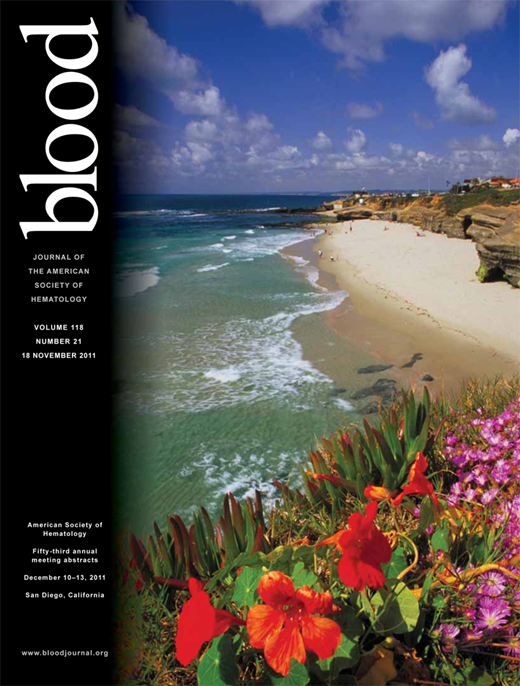Abstract
Abstract  2100
2100
Autoimmune hemolytic anemia (AIHA) in children is in more than half cases characterized by a severe course, with prolonged need of immunosuppressive therapy. Rituximab is a chimeric anti-CD20 monoclonal antibody increasingly used for treating severe autoimmune diseases. Paediatric experience in AIHA is only made of case reports and short series. The Rare Disease Plan gave us the opportunity to conduct national studies on those rare pediatric diseases.
At the end point of August 1, 2011, data from the CEREVANCE French national prospective cohort of auto-immune cytopenia were extracted, and a retrospective study of children who underwent rituximab for isolated AIHA was conducted. Patients with post bone marrow transplantation AIHA or underlying characterised primitive immune deficiency were excluded. Medical data and procedures were checked from patients' medical records. Complete remission (CR) was defined by haemoglobin count of more than 11 g/dL and reticulocytes count of less than 120 G/L, continuous complete remission (CCR) was defined as CR with no relapse or treatment for at least one year (Aladjidi et al, Haematologica 2011). Efficiency, safety and immunologic tests were evaluated after therapy.
Rituximab was administered in 42 children with isolated AIHA between 1999 and 2010. Associated immunologic disorders were noticed in 16 children before AIHA or during the follow-up. The median age at rituximab initiation was 5.4 years (0.1 to 17.5), with 15 children being younger than 2. The median duration of AIHA before rituximab was 6.2 months (0.1 to 74). The number of lines of treatments before rituximab varied from 1 (steroids alone for 23 children) to 5. Nineteen children received 4 weekly doses of 375 mg/m2, 6 received less than 4 courses and 7 received more than 4 courses (6 to 12). Rituximab allowed CR obtention in 85% of evaluable children, and all immunosuppressive treatment cessation in 67%. For failure or relapse, 21 children required 1 to 3 further lines of treatments. Systematic intravenous immunoglobulin (IVIg) substitution was administered in 55% of children, for a median duration of 18 months (1–140). Rituximab was well tolerated and severe neutropenia with sepsis happened in one child 6 months after rituximab. With a median follow-up of 3.6 years (0.2 to 11.3) after rituximab treatment, 22 children were in CCR, 7 children were in CR without treatment, 10 children were in CR with continuous treatment, 2 children were not in remission, 1 child died from associated giant cell hepatitis. Six children still required IgIV substitution at the last follow up, mainly younger and heavily treated children.
Comparisons with rituximab efficiency and tolerance in chronic ITP and in AIHA/Evans syndrome are available from this national cohort.
This collaborative national study confirms the excellent benefit-risk ratio of rituximab for childhood refractory AIHA. Early introduction could allow avoiding prolonged steroid treatments. However, the benefit of more than 4 courses was not demonstrated in this cohort. AIHA and chronic ITP are different diseases: the prolonged IVIg substitution required in 14% of children imposes to carefully search prior underlying immune deficiency before beginning an anti-CD20 treatment.
Acknowledgments to the Association Française pour le Syndrome d'Evans (AFSE), the GIS-Institut des Maladies Rares-INSERM, and the French Health Ministry (Programme Hospitalier de Recherche Clinique 2005, Rare Diseases Plan 2007).
No relevant conflicts of interest to declare.
Author notes
Asterisk with author names denotes non-ASH members.

This icon denotes a clinically relevant abstract

